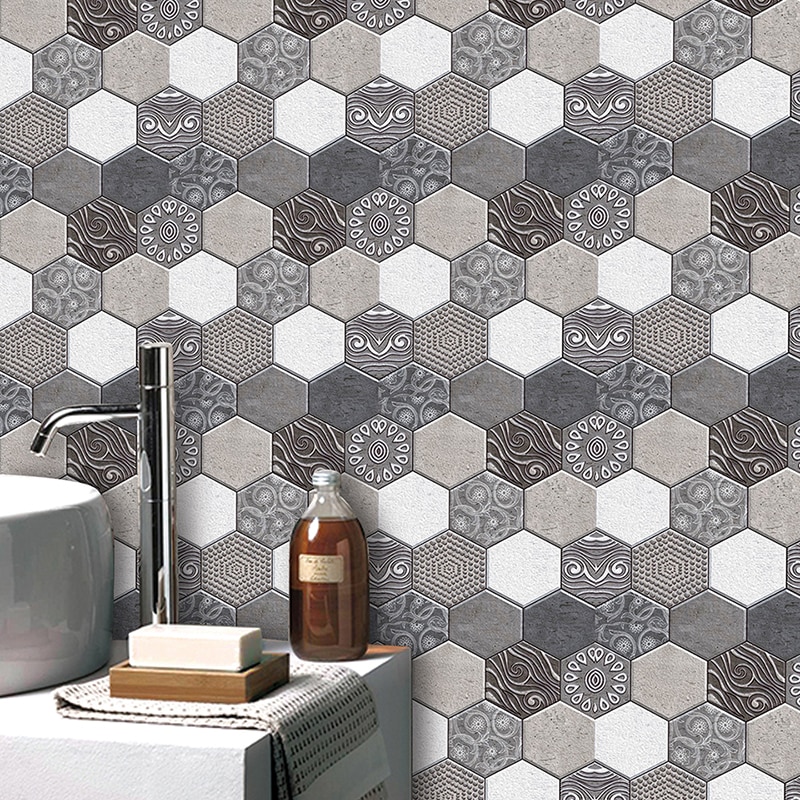
These joints play a crucial role, especially in click vinyl floors on HDF carriers, as otherwise unsightly joint or dent formation can occur during moisture or heat exposure due to e.g. In the edge area, so-called expansion joints must be released so that the material can work accordingly. In addition, the expansion and shrinkage behaviour of the Click vinyl floor must be taken into account: It is best to glue the click vinyl floor from bottom to top on the wall so that the boards can support each other. The boards can be connected relatively easily by the click system, but still have to be attached to the wall with a suitable adhesive at the same time. The assembly of click vinyl floors requires some practice: If a click vinyl floor is to be attached to the wall, it is therefore not absolutely necessary to spat it absolutely smoothly beforehand – dry and even the substrate must still be.

VINYL WALL TILES FOR SHOWER FULL
Unlike full vinyl floors, click vinyl floors forgivable minor bumps in the underground due to their higher strength. Fixing click vinyl floor ingtotheis on the wall This also makes the vinyl floor on the wall water resistant, making it suitable for use in bathrooms. Joints and transitions can be filled and sealed with silicone. The use of a double-sided adhesive tape or the attachment of the vinyl floor to the wall with nails is not recommended. In order to ensure long-term durability, the full-surface bonding with a suitable adhesive is most suitable.

However, the thinner material also has advantages: it is easy to process and easily cut against the wall with a sharp knife.Ī full vinyl floor is usually mounted in planks that are attached to the wall. Otherwise, bumps would penetrate the wall, resulting in unsightly dents in the vinyl floor. If a full vinyl floor is to be fixed to the wall, the substrate must therefore be completely flat and smooth. The material of full vinyl floors is much thinner than vinyl on HDF. However, there are differences in the preparation of the substrate and in the assembly.Ĭheck price Glue full vinyl floor to the wall In principle, all vinyl floors can be attached to the wall.Īlso those that are actually intended for conventional use as flooring.

Until now, vinyl was primarily known and proven for laying on floors.īut modern vinyl floors can also be attached to the wall.ĭue to the advantageous material properties and the limitless selection of different decors, they open up a wide range of possibilities in the design of the room. This article explains what is important when installing vinyl floors on the wall. Gluing a vinyl floor to the wall is a novel and increasingly popular alternative in interior design. Contact adhesive for fixing vinyl floors to the wall


 0 kommentar(er)
0 kommentar(er)
